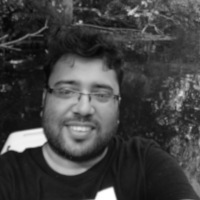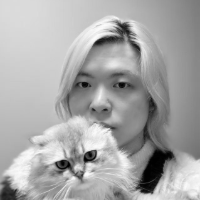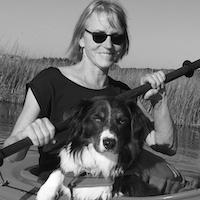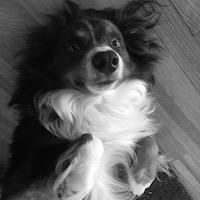People

|
Pramod RT (pramodrt at mit dot edu) The brain is an extraordinary machine -- it processes a lot of information at astonishing speeds to enable us to go about our everyday lives. What kind of information is represented where (and when) in the brain? What are the underlying computations? As a Research Scientist with Nancy Kanwisher, I am working towards answering these questions using ECoG, Neuroimaging and computational modeling. Prior to this, I obtained my PhD from the Indian Institute of Science where I worked with SP Arun towards understanding the compositional nature of object representation in brains and machines. Check out my website for more info! |

|
Thomas O'Connell (tpo at mit dot edu) I am a postdoctoral researcher working with Nancy Kanwisher and Josh Tenenbaum. My research aims to answer how perceptual processes in the primate brain give rise to behavior and higher-order cognition using tools from neuroscience (fMRI, MEG, non-human primate electrophysiology) and cognitive computational modeling (deep learning, inverse graphics). Prior to MIT, I received my PhD with Marvin Chun at Yale University applying neural reconstruction techniques to study spatial attention in the human brain. |

|
Emalie McMahon (emaliem at mit dot edu) Walking into a coffee shop, even without hearing any individual conversation, you immediately see who is talking to whom, and you know whether their interactions are warm and lively or dull and cordial. My research aims to understand how we perceive the conversations and interactions between other people in the world around us. I am answering this complex question with Nancy Kanwisher using a combination of neuroimaging (fMRI), electrophysiology (intracranial and scalp EEG), human behavior, and computational modeling. Prior to joining MIT, I was a research assistant at the National Institute of Mental Health with Maryam Vaziri-Pashkam and Leslie Ungerleider, and I then completed my PhD with Leyla Isik and Mick Bonner at Johns Hopkins University. |

|
Zitong Lu (zitonglu at mit dot edu) I am interested in understanding how we process object information in the complex and dynamics world using behavioral, EEG, fMRI, and computational approaches and building more brain-like artificial neural networks. Before joining MIT, I received a B.Eng. in software engineering from Northeastern University in China and M.S. in cognitive neuroscience from East China Normal University. I recently completed my PhD in cognitive neuroscience working with Julie Golomb at The Ohio State University. Check out my website for more info! |

|
Aryan Zoroufi (aryanz at mit dot edu) I am a graduate student in BCS studying visual search and visually-guided action planning in virtual environments. Specifically, I am curious to study how we use visual information to plan our actions and how the goal of our actions modulates the way we perceive the world. Before joining MIT, I obtained a bachelor’s degree in Electrical Engineering from K.N.TOOSI university in Tehran, Iran, where I worked with Maryam Vaziri-Pashkam from NIH to study how we use visual information to grasp objects. |

|
Cyn Fang (cxf at mit dot edu) I am a graduate student in BCS interested in intuitive physical reasoning. Imagine seeing a stack of dishes in the sink. Without too much effort, you can figure out where to place another plate without knocking everything over. Or if someone tosses a ball at you, you can predict its trajectory quickly enough to catch it. Are these computations supported by a distinct cognitive mechanism within the mind and brain? Are some people better or worse at physical reasoning invariant to their other cognitive abilities? I use behavioral studies, fMRI, and computational modeling to approach these questions. Previously, I did my undergrad at MIT in Computation and Cognition (6-9). |

|
Colton Casto (ccasto at mit dot edu) I am a graduate student in the Harvard-MIT Program in Speech and Hearing Bioscience and Technology (SHBT) co-advised by Nancy Kanwisher and Ev Fedorenko. I am also supported by a graduate fellowship from the Kempner Institute for the Study of Natural and Artificial Intelligence at Harvard University. I am broadly interested in the neural basis of language. In particular, I want to understand how non-classical language regions—such as the cerebellum or the hippocampus—contribute to language processing. I am also interested in how our brains represent, update, and dynamically access past context during online language use. To pursue these questions, I use a variety of approaches from neuroscience and machine learning, including intracranial electroencephalography (iEEG), functional magnetic resonance imaging (fMRI), and computational modeling. Before starting my PhD, I completed my undergraduate studies at Princeton University in Neuroscience, with minors in Computer Science and Machine Learning. Visit my website for more details. |

|
Georgina Woo (gwoo at mit dot edu) I’m interested in the intuitive physics that underlies our perception of structure and support in the visual world. As a post-baccalaureate research scholar in the Kanwisher Lab, I’m learning to use fMRI, machine learning, and computational modeling to study how the brain represents these physical intuitions. I recently graduated from Hunter College with a double major in Computer Science and Theatre, where my undergraduate research focused on computer vision, robotics, and social scene understanding. I plan to pursue graduate study in cognitive science or computer science to continue exploring how humans and machines make sense of the world around them. |

|
David Rahabi (drahabi at mit dot edu) As a lab tech, I’m excited to develop both my skills and interests alongside this incredible team of researchers! I graduated from Rutgers University with a double major in Computer Science and Cognitive Science, where I contributed to projects focused on eye movements and object recognition. I'm especially interested in the relationship between visual and motor processes, particularly how mental representations differ between percepts with and without action goals. I’m excited to learn and apply methods from neuroimaging, psychophysics, and machine learning to investigate the structure and function of the visual system and beyond! |

|
Thomas Brewitt (twbrew at mit dot edu) I am an undergrad student pursuing a degree in Computation and Cognition. My time at the lab has allowed me to study topics such as material perception and physics representation in the brain alongside this wonderful team. I am interested in learning more about the representation of abstract concepts in the brain to help inform the design of more “humanly” intelligent AI systems. I hope my time with the lab will provide a solid basis for building a fulfilling scientific career! |

|
Nancy Kanwisher (ngk at mit dot edu) Lucky me! I get to work with all the brilliant and wonderful people on this page, and to think about cool questions like these: How are objects, faces, and scenes represented in the brain, and (how) do the representations of each of these classes of stimuli differ from each other? How are visual representations affected by attention, awareness, and experience? Which mental processes get their own special patch of cortex, why is it these processes and (apparenly) not others, and how do special-purpose bits of brain arise in the first place? If you want to know about my personal story, check out this graduation speech I gave at the University of York 2021, discussing privilege, luck, and compassion in science and life; listen to this interview about my twisted career path, or this one, or read about the quest for the FFA! |

|
Shiloh Hi, I’m Shiloh. I grew up in Alabama then got shipped up north to my new home with Mom and Dad on Cape Cod. I love running and leaping and snuggling. I can’t wait to have the whole Kanwisher Lab to play with! |